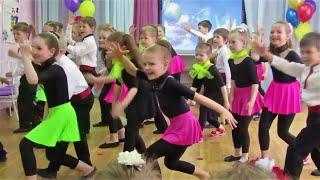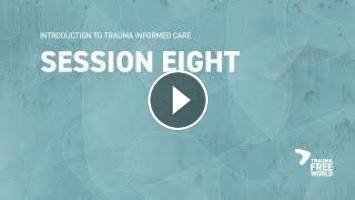For the rest of this course, we will be looking at emotions and behaviors. It’s important to clarify that some kids act in while others act out, or kids may alternate between both. Acting in may include anxiety, sadness, social withdrawal, and people-pleasing, whereas acting out may look like aggression, conduct issues, and oppositional behavior. Though the acting out behaviors may seem more problematic, both need attention.
This session will look at Essential Skill #3 - Helping children reduce overwhelming emotions by building connections. From the beginning of life until the end, we all share two significant needs: attachment and orientation. We discussed attachment in Session 5. Attachment answers the question, “Who are my people?” and orientation answers the questions, “What am I supposed to be doing?” and “how am I to act?” Unfortunately, many children and adolescents who lack attachment and orientation with safe adults find it with each other. When they disconnect from adults, their growth, maturity, and development slow or even stop. We need to bring them back into a relationship with adults who will give them their attachment and orientation.
Parenting styles are the way a parent engages with their child daily. This includes the parent’s level of expectations, performance, behavioral demands, how they handle rules, and style of discipline. Psychologists share that there are 4 parenting styles: Authoritarian, Authoritative, Permissive, and Uninvolved. High structure but low nurture is the Authoritarian parenting style. High structure and high nurture is the Authoritative parenting style – the parent has rules and boundaries but also gives the child a voice and lots of care and affection. Low structure but high nurture is the Permissive parenting style. Low structure and nurture is the Uninvolved or neglectful parenting style. Some people think that a childhood with no rules or boundaries would be great, but researchers have found that high nurture AND high structure – the authoritative style is the one that results in the lowest amount of acting out behaviors in adolescence and helps produce good decision making and judgment.
We will look at ways to build connections with children and adolescents because it doesn’t always come naturally or easily. But, before we take a look at what to do right, we're going to look at connections gone wrong. This is the negative reaction cycle. Like the attachment cycle, this cycle starts with a child who has a need. We know that kids from hard places can struggle using their words to get their needs met, so this child may express his need with what looks like bad behavior because his stress response has kicked in, and he is in hyperarousal. In the negative reaction cycle, the adult reacts to the poor behavior rather than responding to the need behind the behavior. This results in continued hyperarousal from the child and continued reaction from the adult. It’s likely the adult has also entered a state of hyperarousal in this scenario – remember, a dysregulated adult can never regulate a dysregulated child.
Dr. Gordon Neufeld says that there is a correlation between my emotional connection to a child and my tolerance of their behavior. I have definitely found this to be true. We need to work on our connections with the children and adolescents we work with and care for so that we can tolerate their behavior to the point that we aren’t willing to let it break our connection, no matter what.
We will look at two ways to build connection using the arousal/relaxation cycle that we talked about in Session 5 and the Positive Interaction Cycle. The arousal/relaxation cycle is child-initiated, and it begins with the child’s need. Meeting needs builds attachment and connection. It helps children and adolescents learn to relax and trust us.
In the positive interaction cycle, the adult purposely initiates with the child or adolescent based on what they like to do. You spend intentional time together doing activities that matter to them because you want them to know that they matter to you. Together you both experience increased self-worth, connection, and positive brain growth.
This session will look at Essential Skill #3 - Helping children reduce overwhelming emotions by building connections. From the beginning of life until the end, we all share two significant needs: attachment and orientation. We discussed attachment in Session 5. Attachment answers the question, “Who are my people?” and orientation answers the questions, “What am I supposed to be doing?” and “how am I to act?” Unfortunately, many children and adolescents who lack attachment and orientation with safe adults find it with each other. When they disconnect from adults, their growth, maturity, and development slow or even stop. We need to bring them back into a relationship with adults who will give them their attachment and orientation.
Parenting styles are the way a parent engages with their child daily. This includes the parent’s level of expectations, performance, behavioral demands, how they handle rules, and style of discipline. Psychologists share that there are 4 parenting styles: Authoritarian, Authoritative, Permissive, and Uninvolved. High structure but low nurture is the Authoritarian parenting style. High structure and high nurture is the Authoritative parenting style – the parent has rules and boundaries but also gives the child a voice and lots of care and affection. Low structure but high nurture is the Permissive parenting style. Low structure and nurture is the Uninvolved or neglectful parenting style. Some people think that a childhood with no rules or boundaries would be great, but researchers have found that high nurture AND high structure – the authoritative style is the one that results in the lowest amount of acting out behaviors in adolescence and helps produce good decision making and judgment.
We will look at ways to build connections with children and adolescents because it doesn’t always come naturally or easily. But, before we take a look at what to do right, we're going to look at connections gone wrong. This is the negative reaction cycle. Like the attachment cycle, this cycle starts with a child who has a need. We know that kids from hard places can struggle using their words to get their needs met, so this child may express his need with what looks like bad behavior because his stress response has kicked in, and he is in hyperarousal. In the negative reaction cycle, the adult reacts to the poor behavior rather than responding to the need behind the behavior. This results in continued hyperarousal from the child and continued reaction from the adult. It’s likely the adult has also entered a state of hyperarousal in this scenario – remember, a dysregulated adult can never regulate a dysregulated child.
Dr. Gordon Neufeld says that there is a correlation between my emotional connection to a child and my tolerance of their behavior. I have definitely found this to be true. We need to work on our connections with the children and adolescents we work with and care for so that we can tolerate their behavior to the point that we aren’t willing to let it break our connection, no matter what.
We will look at two ways to build connection using the arousal/relaxation cycle that we talked about in Session 5 and the Positive Interaction Cycle. The arousal/relaxation cycle is child-initiated, and it begins with the child’s need. Meeting needs builds attachment and connection. It helps children and adolescents learn to relax and trust us.
In the positive interaction cycle, the adult purposely initiates with the child or adolescent based on what they like to do. You spend intentional time together doing activities that matter to them because you want them to know that they matter to you. Together you both experience increased self-worth, connection, and positive brain growth.









Комментарии